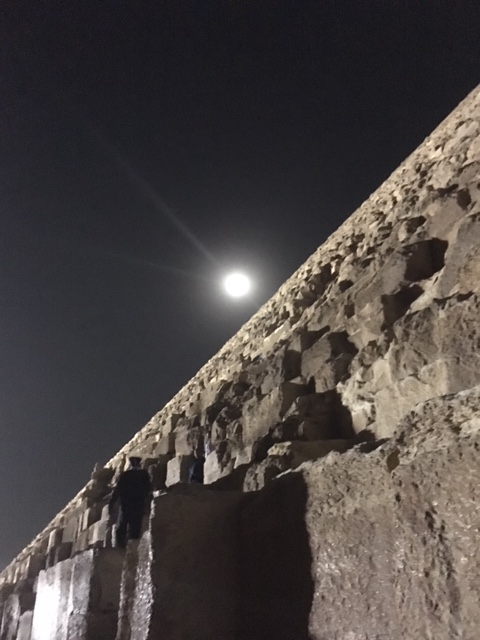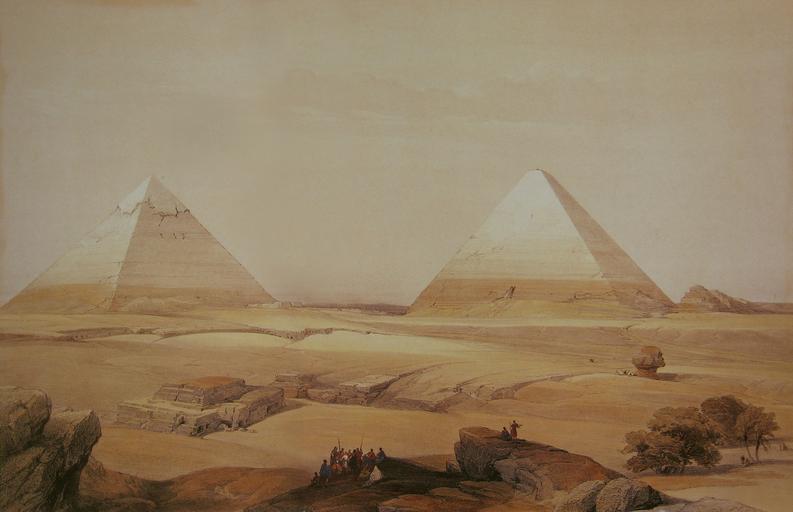Goddess Sign — The Bow & Arrow
Sagittarius is a mutable fire sign and embodies the idea of illumination that results from the joining of balanced power in the two prior signs, Scorpio and Libra. Sagittarius energy is philosophical in nature, seeking wisdom and an understanding of fundamental archetypal principles. While its opposite sign Gemini tends to gather information, Sagittarius looks for wide and varied experiences that ultimately lead to spiritual understanding. The path of Sagittarius is to learn the patterns that lie at the root of our problems and challenges. This search can lead to true perception and the ability to focus and direct the fire of aspiration.
The Goddess Sign for Sagittarius is the Bow and Arrow, and this symbol affirms that we should aim for the stars and keep our feet on the ground. In traditional astrology, Sagittarius is symbolized by the Archer, who is a centaur. Many goddesses, in fact some of the most ancient, are huntresses who live in primeval forests and guard the animals who live there. For these goddesses hunting is not sport but a sacred act of reciprocity that is represented in women’s lives and the Earth herself. The Sagittarian hunt can also be seen more symbolically as the quest for wisdom, engaging the fire of aspiration that takes us into a larger view of the world. Goddesses that are included in Sagittarius represent wisdom, dreams, providence, fortune, the voices of oracles, and horse goddesses who are kin to centaurs. Because Sagittarius is ruled in astrology by the sky god Jupiter, a mythical latecomer, goddesses of light, wisdom, thunder and lightning are also included.
Diana is the Roman goddess of the hunt. She is equivalent to the Greek Artemis, although Diana is thought be of earlier Italian origin. Diana was envisioned as riding across the sky in a chariot drawn by two white stags. Much later, she and her twin Apollo were born on the Greek island of Delos. Many temples to Diana were later converted to churches dedicated to Mary. Danu is the ancient mother goddess of the Celtic Tuatha De Dannan, the “people of the goddess Danu.” They were believed to be a magical race of beings skilled in the lore of the Druids. They are linked to the legendary fairy folk who live beneath the hills. The root of Danu’s name means “overflowing abundance,” which is a likely connection to a Sagittarius goddess.
Fortuna is the Roman goddess whose domain is good fortune, as her name suggests. She was worshipped far and wide in the Roman world. People visited her shrines to appeal for her positive intervention in their changing fortunes, and she was usually depicted on a grand scale. Tyche, whose name also means “fortune,” is a Greek mother goddess who likewise has dominion over fate and luck. She is usually depicted standing on a wheel, blindfolded and winged. A statue found in Petra, Jordan, shows Tyche’s face within a zodiac, which is supported by the winged goddess of victory, Nike. It was said no ruler of Antioch had the ability to act without Tyche’s favor.
Bilquis is an Arabian goddess from Yemen who scholars equate with the legendary Queen of Sheba. Bilquis was half djinn, or genie, on her mother’s side, and was endowed with magical powers and great wisdom. One lineage considers her to be the mother of Menelik, the king of Ethiopia, who was Solomon’s son and part of a dynasty that extends to present-day Rastafarians. Minerva was the goddess and keeper or guardian of Rome itself, although she is Etruscan in origin. Her name derives from an Indo-European root that means “mind.” Minerva was seen as the actual embodiment of wisdom. Athena, or Pallas Athena, is a famous Greek goddess of wisdom. The owl, who is able to see in the darkness, is her sacred animal. The Greeks named the city of Athens for her in gratitude for the gift of the olive tree. In a contest for the honor, Poseidon struck a rock on the Acropolis and created a spring, but Athena won the day when her olive seed sprouted and bore fruit.
Sapienta, whose name means “feminine wisdom” is another archetype of wisdom. Wisdom was sophia to the Greeks and chockmah to the Jews. The Latin Sapienta thrived as a hidden goddess of philosophical inquiry between the fifth and fifteenth centuries when the sacred feminine was considered heresy. In a similar way, Shekinah, the feminine side of God in the Jewish tradition, is seen as the principle of light that dwelled at the very heart of the Jerusalem temple. Sarah, who is described in the Bible and the Quran, is really a goddess in disguise. Her name means both “goddess” and “princess.” In rabbinic literature her gifts of prophecy were greater than those of her husband, Abraham, since Sarah received her prophecies directly from God rather than from angels. As a human woman she was a Chaldean princess who brought both wealth and status to her husband.
Pandora was a Greek goddess whose name means “all giver.” Her story is an example of how powerful goddesses were diminished as the patriarchy ascended to power. In the early myths, Pandora was married to Prometheus and she dispensed only good gifts to humanity The identification of “Pandora’s box” was a later invention and a translation mistake. The container was a honey jar, a pithos, which poured out only sweet blessings. Bona Dea, the “good goddess,” was a healer whose special rites were celebrated on December 4, the date she is honored in Goddesses For Every Day. She was shown seated on a throne and holding a cornucopia. She was worshipped in gardens of medicinal herbs where sick people were tended.
Rhiannon is a Welsh horse goddess who name derives from Rigantona, which means “great queen.” She was made famous in modern times by means of the popular song of the same name written and sung by Stevie Nicks. In the magical and mysterious ways of the Goddess, Nicks liked the name when she read it in a novel but was unaware of the myth until after she wrote the enduring song. Rolling Stone magazine rated Rhiannon as one of the greatest songs of all time.
Wherever the idea of wisdom is found in traditions around the world it is always seen as feminine. I believe it’s because wisdom can be seen as a container in which we gather our experiences and knowledge. Because vessels are always feminine, and true wisdom involves compassion, it is an essentially feminine and receptive quality—something we attain and hold. During the time of Sagittarius we can call upon powerful goddesses of wisdom and light to guide us through the dark time of the year.
Sagittarius is a mutable fire sign and embodies the idea of illumination that results from the joining of balanced power in the two prior signs, Scorpio and Libra. Sagittarius energy is philosophical in nature, seeking wisdom and an understanding of fundamental archetypal principles. While its opposite sign Gemini tends to gather information, Sagittarius looks for wide and varied experiences that ultimately lead to spiritual understanding. The path of Sagittarius is to learn the patterns that lie at the root of our problems and challenges. This search can lead to true perception and the ability to focus and direct the fire of aspiration.
The Goddess Sign for Sagittarius is the Bow and Arrow, and this symbol affirms that we should aim for the stars and keep our feet on the ground. In traditional astrology, Sagittarius is symbolized by the Archer, who is a centaur. Many goddesses, in fact some of the most ancient, are huntresses who live in primeval forests and guard the animals who live there. For these goddesses hunting is not sport but a sacred act of reciprocity that is represented in women’s lives and the Earth herself. The Sagittarian hunt can also be seen more symbolically as the quest for wisdom, engaging the fire of aspiration that takes us into a larger view of the world. Goddesses that are included in Sagittarius represent wisdom, dreams, providence, fortune, the voices of oracles, and horse goddesses who are kin to centaurs. Because Sagittarius is ruled in astrology by the sky god Jupiter, a mythical latecomer, goddesses of light, wisdom, thunder and lightning are also included.
Diana is the Roman goddess of the hunt. She is equivalent to the Greek Artemis, although Diana is thought be of earlier Italian origin. Diana was envisioned as riding across the sky in a chariot drawn by two white stags. Much later, she and her twin Apollo were born on the Greek island of Delos. Many temples to Diana were later converted to churches dedicated to Mary. Danu is the ancient mother goddess of the Celtic Tuatha De Dannan, the “people of the goddess Danu.” They were believed to be a magical race of beings skilled in the lore of the Druids. They are linked to the legendary fairy folk who live beneath the hills. The root of Danu’s name means “overflowing abundance,” which is a likely connection to a Sagittarius goddess.
Fortuna is the Roman goddess whose domain is good fortune, as her name suggests. She was worshipped far and wide in the Roman world. People visited her shrines to appeal for her positive intervention in their changing fortunes, and she was usually depicted on a grand scale. Tyche, whose name also means “fortune,” is a Greek mother goddess who likewise has dominion over fate and luck. She is usually depicted standing on a wheel, blindfolded and winged. A statue found in Petra, Jordan, shows Tyche’s face within a zodiac, which is supported by the winged goddess of victory, Nike. It was said no ruler of Antioch had the ability to act without Tyche’s favor.
Bilquis is an Arabian goddess from Yemen who scholars equate with the legendary Queen of Sheba. Bilquis was half djinn, or genie, on her mother’s side, and was endowed with magical powers and great wisdom. One lineage considers her to be the mother of Menelik, the king of Ethiopia, who was Solomon’s son and part of a dynasty that extends to present-day Rastafarians. Minerva was the goddess and keeper or guardian of Rome itself, although she is Etruscan in origin. Her name derives from an Indo-European root that means “mind.” Minerva was seen as the actual embodiment of wisdom. Athena, or Pallas Athena, is a famous Greek goddess of wisdom. The owl, who is able to see in the darkness, is her sacred animal. The Greeks named the city of Athens for her in gratitude for the gift of the olive tree. In a contest for the honor, Poseidon struck a rock on the Acropolis and created a spring, but Athena won the day when her olive seed sprouted and bore fruit.
Sapienta, whose name means “feminine wisdom” is another archetype of wisdom. Wisdom was sophia to the Greeks and chockmah to the Jews. The Latin Sapienta thrived as a hidden goddess of philosophical inquiry between the fifth and fifteenth centuries when the sacred feminine was considered heresy. In a similar way, Shekinah, the feminine side of God in the Jewish tradition, is seen as the principle of light that dwelled at the very heart of the Jerusalem temple. Sarah, who is described in the Bible and the Quran, is really a goddess in disguise. Her name means both “goddess” and “princess.” In rabbinic literature her gifts of prophecy were greater than those of her husband, Abraham, since Sarah received her prophecies directly from God rather than from angels. As a human woman she was a Chaldean princess who brought both wealth and status to her husband.
Pandora was a Greek goddess whose name means “all giver.” Her story is an example of how powerful goddesses were diminished as the patriarchy ascended to power. In the early myths, Pandora was married to Prometheus and she dispensed only good gifts to humanity The identification of “Pandora’s box” was a later invention and a translation mistake. The container was a honey jar, a pithos, which poured out only sweet blessings. Bona Dea, the “good goddess,” was a healer whose special rites were celebrated on December 4, the date she is honored in Goddesses For Every Day. She was shown seated on a throne and holding a cornucopia. She was worshipped in gardens of medicinal herbs where sick people were tended.
Rhiannon is a Welsh horse goddess who name derives from Rigantona, which means “great queen.” She was made famous in modern times by means of the popular song of the same name written and sung by Stevie Nicks. In the magical and mysterious ways of the Goddess, Nicks liked the name when she read it in a novel but was unaware of the myth until after she wrote the enduring song. Rolling Stone magazine rated Rhiannon as one of the greatest songs of all time.
Wherever the idea of wisdom is found in traditions around the world it is always seen as feminine. I believe it’s because wisdom can be seen as a container in which we gather our experiences and knowledge. Because vessels are always feminine, and true wisdom involves compassion, it is an essentially feminine and receptive quality—something we attain and hold. During the time of Sagittarius we can call upon powerful goddesses of wisdom and light to guide us through the dark time of the year.
Based on and excerpts from Goddesses for Every Day © 2010 by Julie Loar. Printed with permission of New World Library, Novato, CA www.newworldlibrary.com














